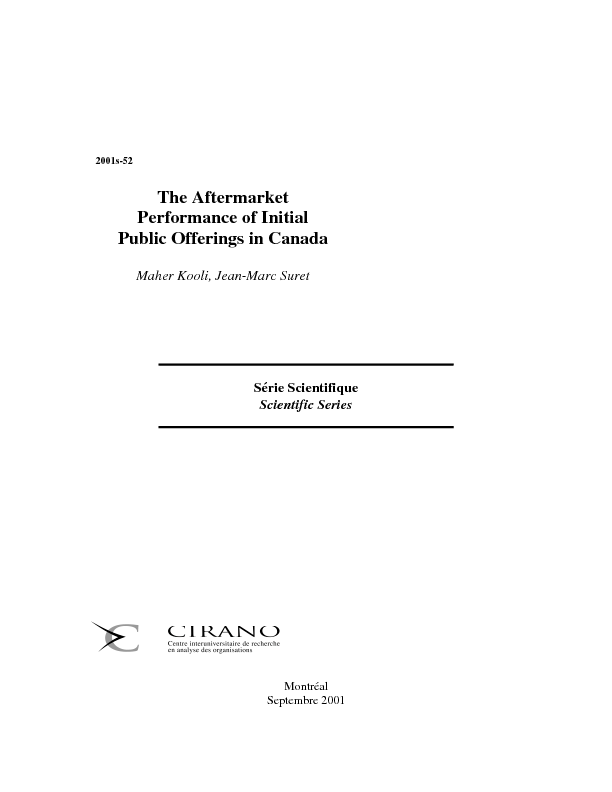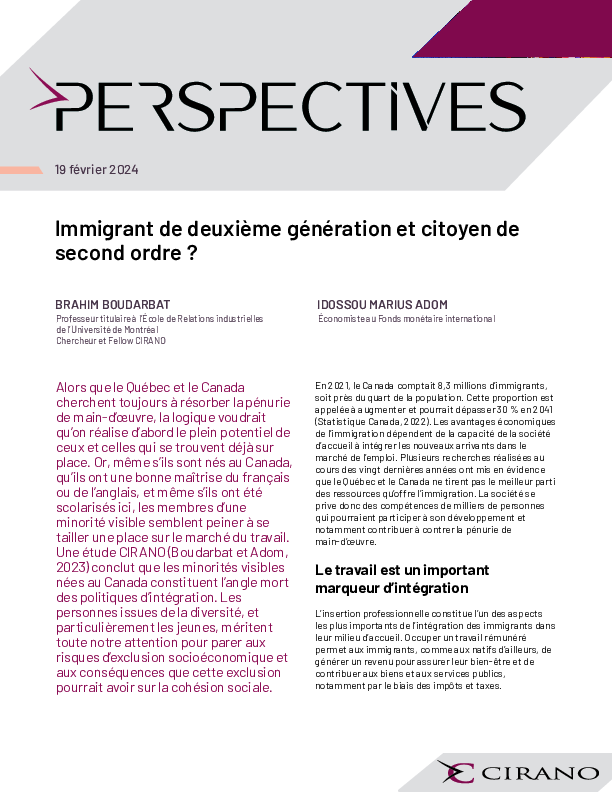The Aftermarket Performance of Initial Public Offerings in Canada
In this paper, we empirically investigate Canadian initial public offerings (IPOs) to provide one case on the international evidence on the long-run performance of IPOs. Specifically, we examine whether the choice of a performance measurement methodology directly determines both the size and power of statistical test, as documented in previous studies (Mitchell and Stafford, 2000; Loughran and Ritter, 2000; and Brav, Geczy and Gompers, 2000). Our sample consists of 445 IPOs between January 1991 and December 1998. Using cumulative abnormal returns as an abnormal performance measure, we find that the Canadian IPOs underperform significantly the sample of seasoned firms with the same market capitalization. More specifically, the 3 year and the 5 year underperformances estimated on value weighted (VW) basis are statistically significant. Moreover, using the buy-and hold returns as an alternative measurement for long-run performance, we find that investors who buy immediately after listing and hold shares for five years will make a loss of 24,66%, on equally weighted (EW) basis (15,16% on VW basis) relative to an investment in the control firms. Using the calendar-time returns method, we find that the 5 years underperformance is 25,6% on EW basis (19,22% on VW basis). We have entertained a number of possible explanations for the poor subsequent performance of issuing firms. While, the fads or investor's overreactions and divergence of opinions hypotheses do not apply in explaining the aftermarket performance of Canadian IPOs, our evidence is consistent with the hot issue market story.
[ - ]




